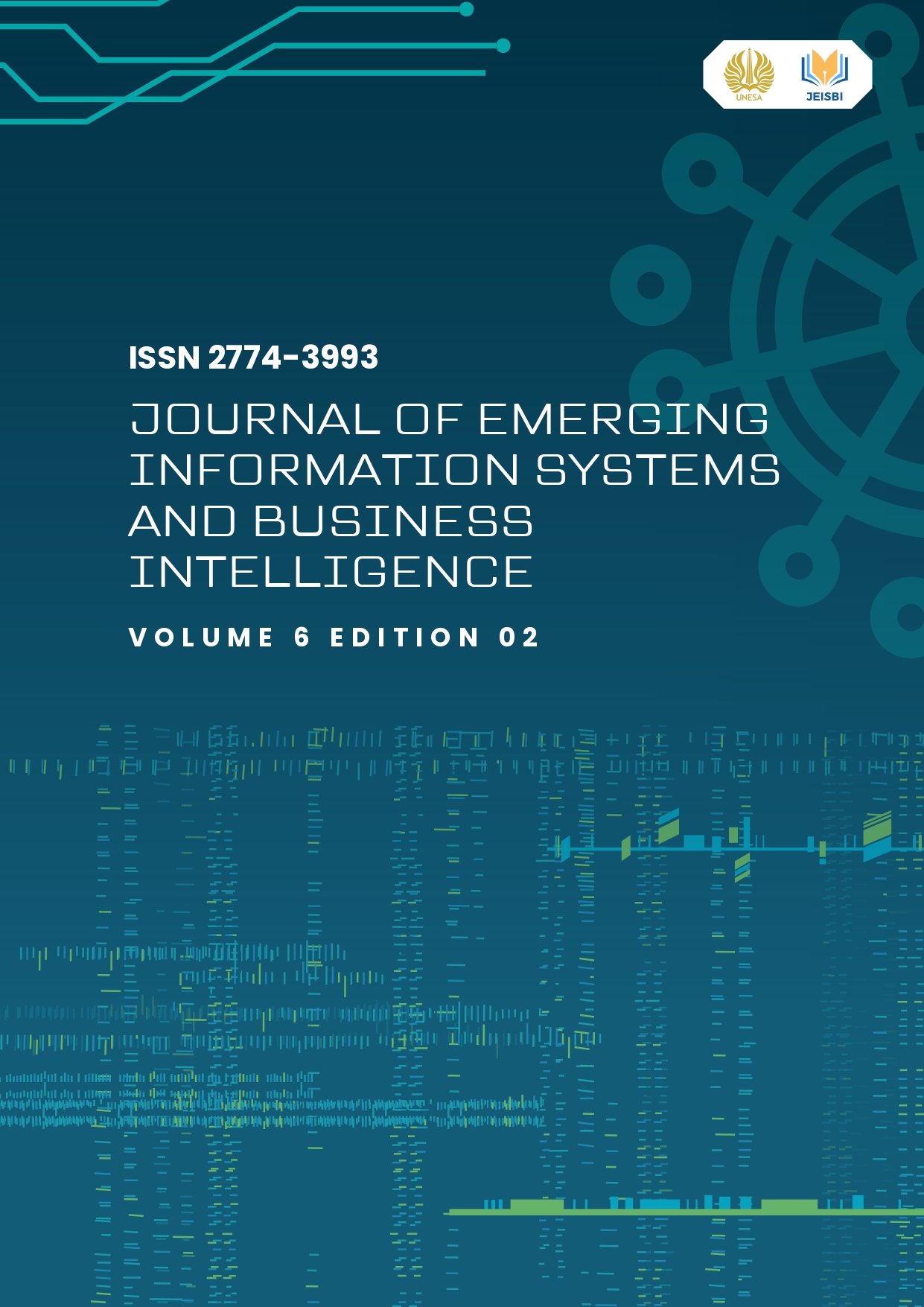TOPIC MODELING OF UNESA LAKE REVIEW ON GOOGLE MAPS USING LATENT DIRICHLET ALLOCATION (LDA) METHOD
DOI:
https://doi.org/10.26740/jeisbi.v6i2.69653Keywords:
Topic modeling, Latent dirichlet allocation, User reviews, Google maps, Unesa lake, KDD frameworkAbstract
User reviews on digital platforms hold valuable information that can be used to improve service quality. This study aims to explore the topics that appear in visitor reviews of Lake UNESA based on rating categories with a topic modeling approach using the Latent Dirichlet Allocation (LDA) method. The analysis process follows the stages in the Knowledge Discovery in Databases (KDD) framework, starting from the selection of Google Maps review data, text preprocessing (cleaning, letter normalization, tokenization, word normalization, and stopword removal), and data transformation into bag-of-words representation through bigram-trigram formation and dictionary-corpus creation. Topic modeling is performed using LDA, and the results are evaluated and interpreted through pyLDAvis and wordcloud visualization. Model validation is carried out through Word Intrusion Task and Topic Intrusion Task testing, with accuracy levels of 0.91 and 0.88, respectively. The results show that LDA is able to identify topics optimally. Each rating category produces different topics that represent visitor perceptions of aspects that are not yet available, still k-aspects such as atmosphere, cleanliness, culinary, and facilities. These findings are expected to provide data-based insights to support the development and management of Lake UNESA more effectively.
Downloads
Downloads
Published
How to Cite
Issue
Section
 Abstract views: 77
,
Abstract views: 77
, PDF Downloads: 71
PDF Downloads: 71


